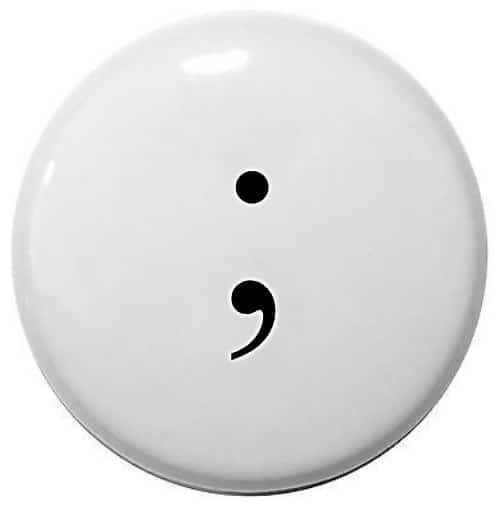You may think of the semicolon as something between the comma and period, but this does not mean that you can replace them with this punctuation mark. There are a few things that you should take into account before using it in your work.
Use a semicolon to join two complete sentences that are closely related to each other.
Examples:
- Some students prefer online learning; others prefer face-to-face courses.
- Everybody went to the party; I had to work.
Question: Should we capitalize the first word of the sentence that comes after a semicolon?
Answer: No, you shouldn’t. Never start such sentences with a capital letter unless they begin with a proper noun (James, New York,…) or an acronym (NATO, NASA,…).
Note 1: You don’t have to use semicolons in sentences like the ones above. Simply put, writers use semicolons to emphasize the close connection (in meaning or thought) between two complete sentences. Moreover, they use it sparingly.
Note 2: Most of the time, the two closely related sentences can be joined using a coordinating conjunction (for, and, nor, but, or, yet, and so). Note that if you want to use coordinating conjunctions, you must use a comma instead of a semicolon.
Examples:
- John came late; everybody else came on time. = John came late, but everybody else came on time.
- I hurt my ankle the other day; I can’t play soccer for a few weeks. = I hurt my ankle the other day, so I can’t play soccer for a few weeks.
You can use a semicolon between two complete sentences/independent clauses that are connected by conjunctive adverbs or transitional phrases.
Examples:
- Mark didn’t stand a chance of winning the game; however, he didn’t give up.
- Julia lives above her means; for example, she made $5,000 last month but spent all that money on entertainment even though she has debts to pay.
Note: Some examples of conjunctive adverbs and transitional phrases:
however, furthermore, moreover, also, finally, consequently, thus, nevertheless, for example, for instance, in addition, …
Use a semicolon in a list with internal commas.
We usually separate a list of items with commas. However, sometimes we need something other than commas to avoid ambiguity. This is when semicolons come into play.
Example:
Take a look at this badly punctuated sentence:
When Timmy opened the box, he saw a toy car, broken into half, a controller, which didn’t have any batteries, and one spare tire. It was unacceptable.
Confusing, isn’t it? Now let’s fix it.
Correct: When Timmy opened the box, he saw a toy car, broken into half; a controller, which didn’t have any batteries; and one spare tire. It was unacceptable.
Timmy saw three things in the box, but when we introduced each one, we also included its description. So, we used commas to separate the extra descriptions and semicolons to introduce the main items in the list to avoid confusion.
Another example:
The members are from New York, the USA; London, the UK; and Beijing, China.
You can use semicolons to avoid repetition on some special occasions.
Take a look at the example below:
In the year 1900, France had a population of approximately 40 million people. In 2005, it had a population of a little under 63 million people. In 2020, it had a population of over 65 million people.
Now, we remove unnecessary repetition using semicolons in combination with commas:
In the year 1900, France had a population of approximately 40 million people; in 2005, a little under 63 million; and in 2020, over 65 million.
Follow us on YouTube for more tips and resources.







